Help For Hurts
Analytics Report: Birds QB's Struggles In 2023
It’s no secret that Eagles quarterback Jalen Hurts and the Eagles’ offense regressed in 2023, one season after the offense was a major factor in the team reaching the Super Bowl.
Blame can placed on both the offensive scheme and on Hurts for the drop-off, as the Eagles fell to eighth in offense from third in 2022.
Clearly, Eagles management believed offensive scheme needed to change, as the team fired offensive coordinator Brian Johnson after his first year calling palsy and hired former Cowboys and Chargers offensive coordinator Kellen Moore.
When deciding where the blame for 2022 should go, context is important.
First, let’s take a big-picture look at the difference between Hurts’ 2023 and 2022 seasons:
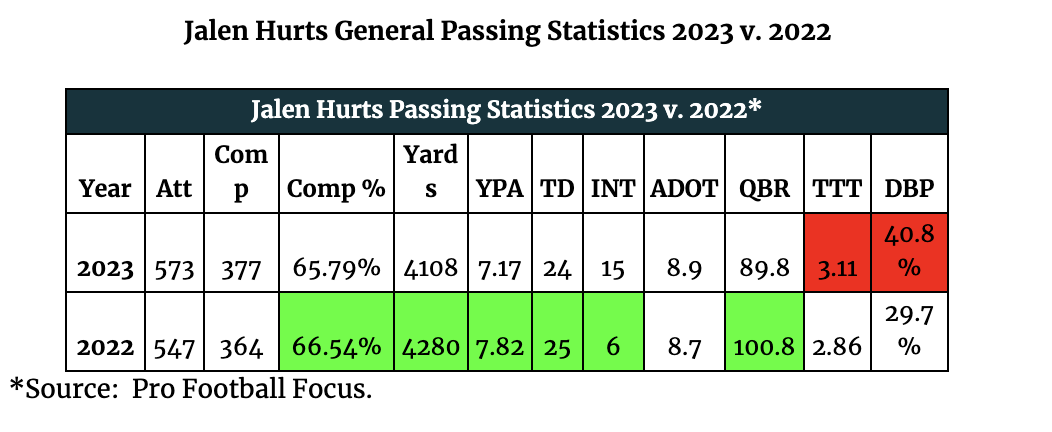
The data shows Hurts maintained a similar completion percentage, yards, yards per attempt, and touchdowns in both seasons.
However, Hurts more than doubled his turnover count in 2023.
Several different factors can be attributed to Hurts’ regression: more deep passes; Hurts holding onto the ball longer; and Hurts seeing more pressure.
Per Pro Football Focus, the Eagles’ average depth of target (ADOT) increased by 0.2 yards – 2.3% increase from 2022 – and Hurts’ average time to throw (TTT) increased by .25 seconds, or *8.74% longer than 2022. He was also pressured on 37.37% more of his dropbacks (“DBP”) in 2023 than in 2022.
According to NextGenStats, Hurts had the second-lowest completion percentage expected in the NFL at 61.3%.
This means that based on the throws Hurts attempted, he had a probability of completing only 61.3% of his passes.
In reality, Hurts completed 65.4% of his passes in the regular season – 65.79% if postseason is included.
This means that Hurts had a completion percentage over expectation (CPOE) of 4.1%, fourth-highest in the NFL.
Hurts’ 4.1% CPOE means he outperformed the throws he was expected to complete.
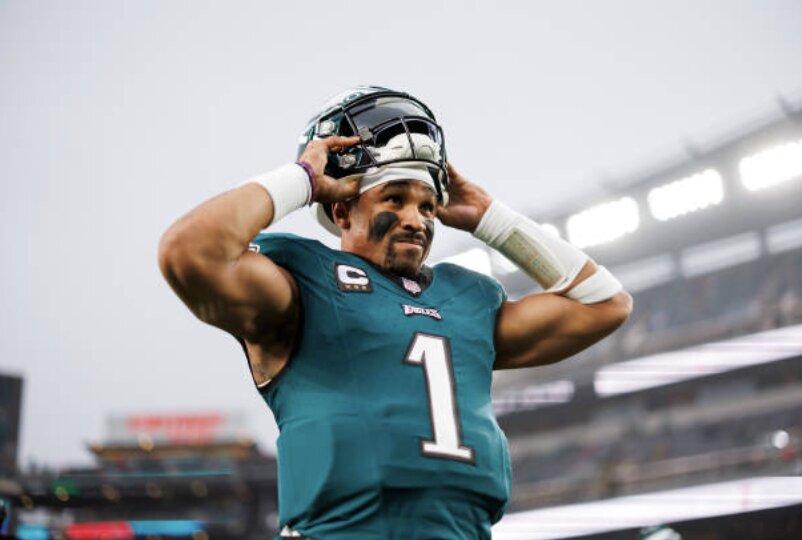
GETTY IMAGES: Can new Eagles OC Kellen Moore get QB Jalen Hurts back to 2022 form?
CPOE isn’t a perfect metric, but the data suggests that despite schematic challenges, Hurts still exceeded expectations of completed passes.
But it’s also worth noting that Hurts possibly put himself in a more difficult position. Film review suggests this hypothesis is accurate.
But without being in the meeting room at the NovaCare Complex, it’s difficult to appropriately assign blame.
It’s clear by statistics – and the eye test – that the scheme didn’t help Hurts; but Hurts also wasn’t blameless in this offensive regression.
Passing Location, Volume, & Effectiveness
In this analytics-based piece, we’ll showcase Hurts’ passing locations, volume and effectiveness in 2023 based on the 12 zones of the field.
The field its divided into three zones – left, middle, right – with four regions per each zone.
The four regions for each zone are: Behind the line of scrimmage (BLOS), short, medium and deep.
Short passes are from 0-9 yards, medium passes are from 10-19 yards, and deep passes are any throws of 20 or more yards.
These stats are important to compare; but it’s essential to look at the volume in each region.
Below is the breakdown of how often the Eagles attacked each of the four regions in each zone in each season and the change:

In terms of passing depth, the Eagles were mostly consistent in terms of the percentage of plays attacking specific areas of the field.
Surprisingly, the Eagles ran a higher percentage of deep passes in 2022 than in 2023. However, the situation and success rate matter, especially in the context of deep throws.
In regards to throws behind the line of scrimmage – a throw of much lower risk and higher percentage – the data showed Hurts targeted the left side of the field significantly more in 2023 than in 2022.
Let’s look how it turned out for them: 
Despite targeting the left side 10 more times behind the line of scrimmage in 2023, the Eagles lowered their yards per attempt at a rate of 9.21%.
Also in 2023 on BLOS throws, the Eagles ran six fewer plays in the middle and were less efficient, earning 11.51% less yards per attempt.
Overall, the Eagles ran about the same number of BLOS plays and Hurts had a higher completion percentage but was less efficient, earning 8.17% less yards per attempt.
Now, let’s look at the second region – short passes:
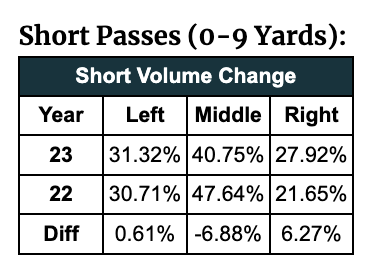
In terms of passing volume for the short game, the Eagles were relatively consistent, favoring the right side more in 2023 at the expense of the middle.

The Eagles ran five more plays short to the left in 2023. Hurts completed a higher percentage of his passes, but lost 10.30% of his 2022 yards-per-attempt efficiency in 2023.
In 2023, the Eagles ran 13 fewer plays short-middle, and when they did run plays short-middle, disaster ensued. Hurts threw four interceptions – three more than in 2022 – in the short-middle area, and his completion percentage and yards-per-attempt fell by around 5%.
The Eagles ran 19 more plays short-right in 2023. Hurts’ yards-per-attempt were basically the same each season, but he completed fewer of his passes, threw less touchdowns and more interceptions in 2023.
Overall, Hurts completed less of his passes, averaged less yards per attempt, and threw less touchdowns in 2023 on 11 more attempts. Additionally, Hurts threw six times the amount of interceptions in this area compared to 2022.
Onto the next region …
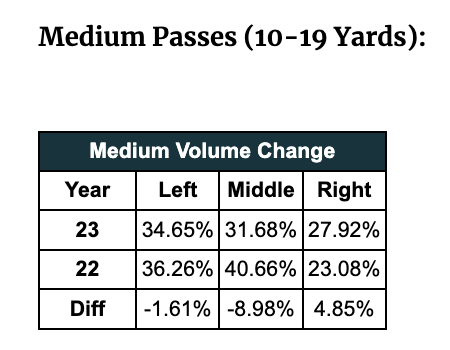
In terms of volume on medium passes, the Eagles continued to shift opportunities to the right side instead of the middle.

In 2023, there wasn’t much variance in medium-left passes from 2o22.
Medium-middle is where Hurts thrived in 2023. His completion percentage increased by a rate of 19.9% and his yards-per-attempt increased by a rate of 3.27%. He also threw more touchdowns and interceptions on medium-middle in 2023.
Hurts saw his medium-right passes increase by almost 10 percent in 2023 but he registered 7.20% less yards per attempt in 2023.
Despite the decline in efficiency, Hurts threw four more touchdowns and no interceptions – one less than 2022 – on medium-right.
Overall, medium passes were a bright spot in in 2023 but these plays were called with less frequency than 2022 – 10 fewer times.
On medium passes, Hurts completed a higher percentage of his passes, threw three more touchdowns, and one less pick in 2023. He was less efficient in terms of yards per attempt, but only lost 5.48% of his 2022 number.
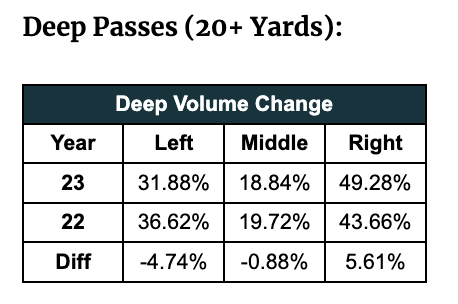
As for deep passes, the Eagles continued the trend of favoring the right side, which makes sense for a right-handed quarterback like Hurts. However, despite the emphasis on the right side, the Eagles consistently struggled in 2023 throwing the ball deep.

Despite the emphasis on deep-right in 2023, Hurts was most successful in comparison to 2022 when he targeted the left-deep, where Hurts increased his completion percentage at a rate of 6.36%.
Hurts was also much more efficient, increasing his yards per attempt at a rate of 21.60%. Hurts also threw three more touchdowns deep-left in 2023 than he did in 2022.
When Hurts threw deep-middle, though, his completion percentage dropped at a rate of 10.26% and his yards per attempt dropped at a rate of 23.90%. He threw two more interceptions and two fewer touchdowns in 2023.
When Hurts threw deep-right in 2023, his completion rate dropped at a rate of 8.82% and his yards per attempt dropped at a rate of 23.40%.
Hurts threw five fewer interceptions overall, and three more interceptions deep-right, in 2023.
Overall, Hurts struggled throwing deep in 2023. Hurts threw three fewer touchdowns deep in 2023 and almost tripled his interception numbers from 2022. Hurts threw at a lower completion percentage and was less efficient.
The Bottom Line
Part of the reason for Hurts’ rapid decline on deep balls is that the Eagles curiously insisted on repeatedly throwing deep against the blitz, even when that strategy wasn’t working.
As a result, teams brought pressure significantly more often. Hurts was pressured almost 40% more in 2023 than in 2022.
When opposing teams brought pressure, they married pressure with coverage that could handle Hurts’deep ball.
There’s little doubt that defensive coordinators schemed pressure to bait Hurts into deep throws that they were confident would be covered – a major part of the undoing of the Eagles’ offense.
The Eagles became predictable, and their problems stemmed from lacking answers to that pressure.
We’ll see if new coordinator Kellen Moore can positively impact Hurts and the team’s offense in 2024, and if Moore can balance the offensive attack to capitalize on short and medium throws, where Hurts has thrived.
Hurts needs to clean up some of his turnovers but offensive talent isn’t an issue. Success must come from the ability to adapt, which the Eagles didn’t do well in 2023.
– Sam Finkel is a staff writer for InsideTheBirds.com who focuses on analytics.
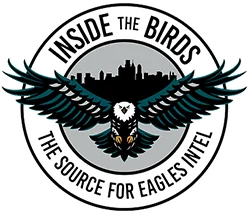

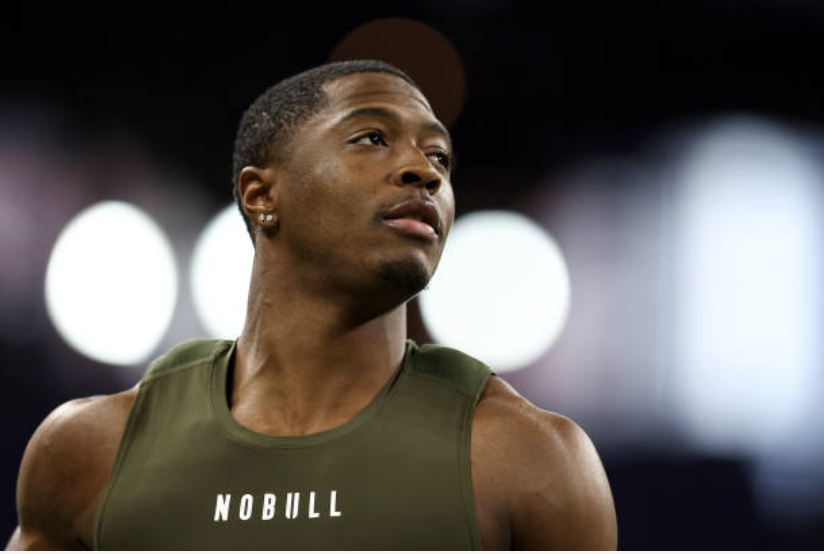
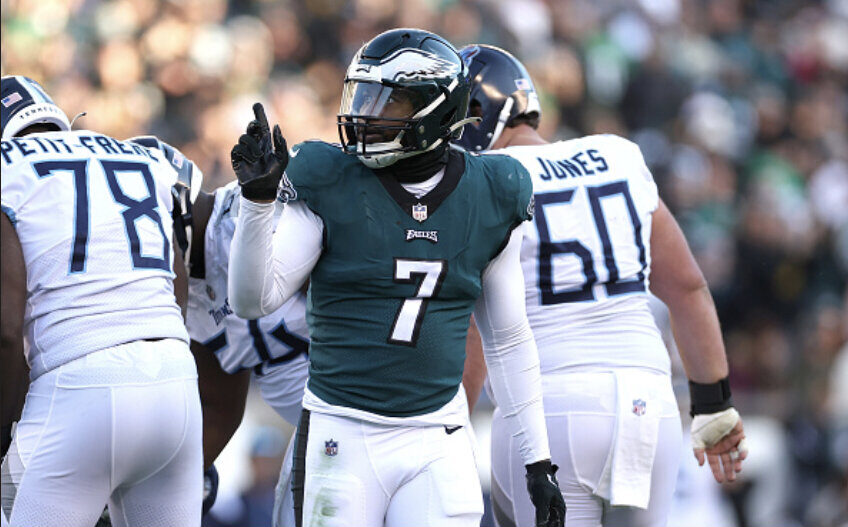
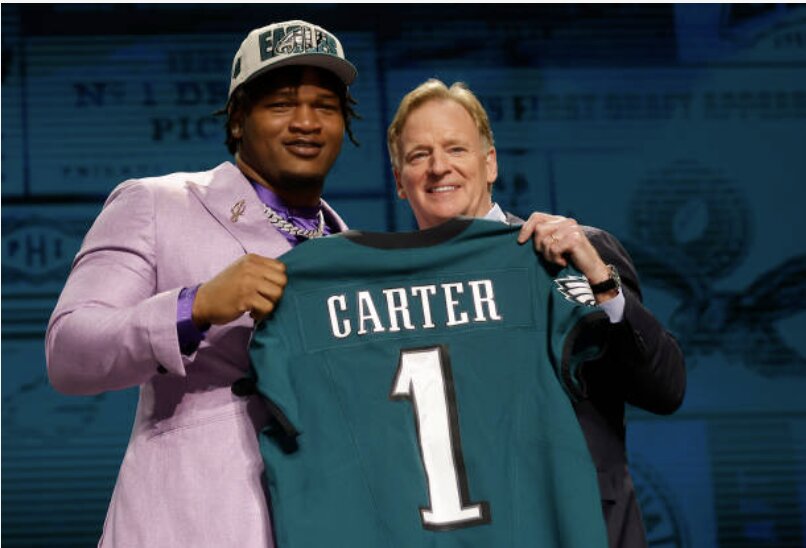
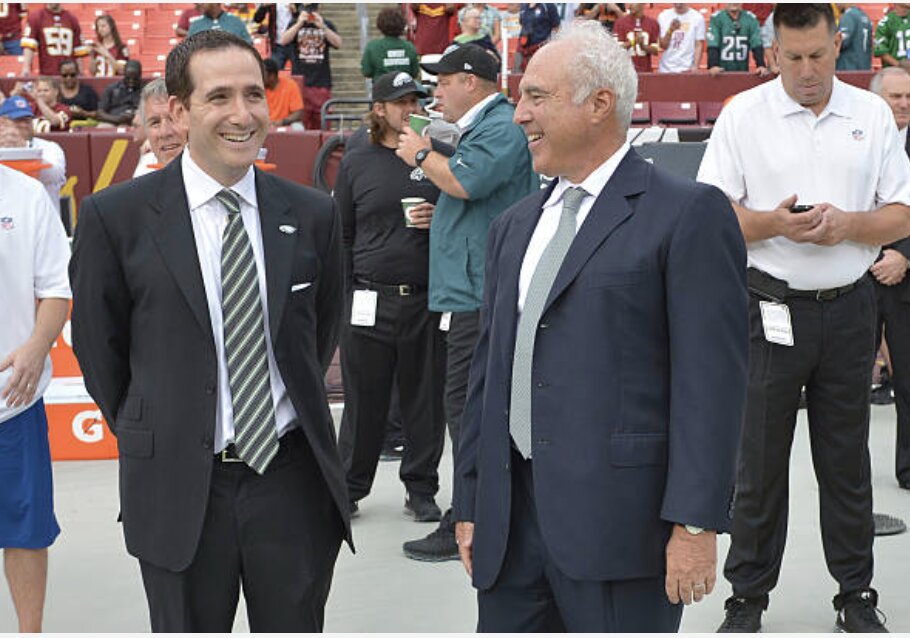
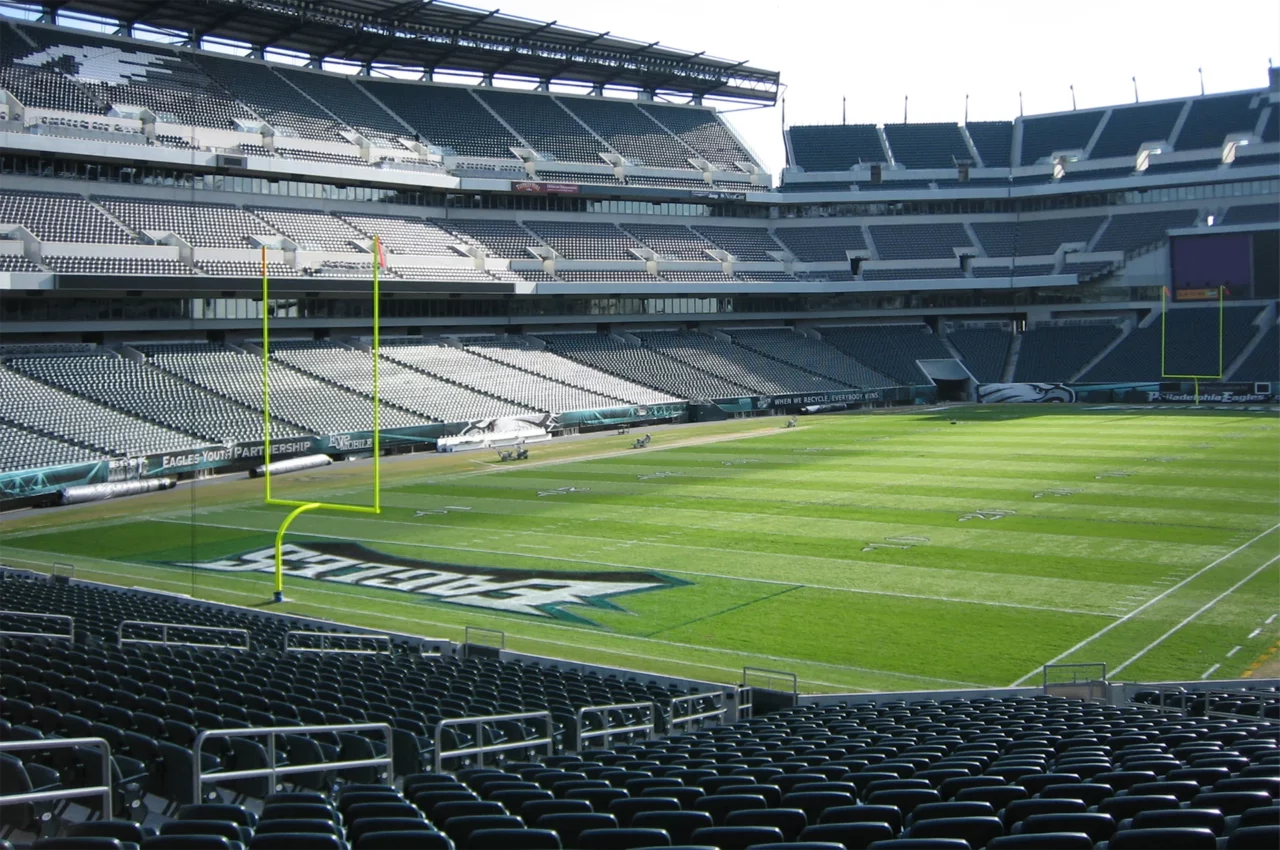
Comments are closed here.